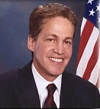Even At 42 Percent, Coleman’s Performance Historically Strong

First, at 42.0 percent, Coleman will have been elected by the lowest percentage in Minnesota in nearly 80 years and the second lowest in Gopher State history ever since popular vote U.S. Senate elections were instituted in 1912. Only Republican Thomas D. Schall would have been elected by a lower percentage of voters, at 37.6 percent in 1930.
Coleman would also join Schall as the only Senators in Minnesota history to be elected more than once without ever having received a majority of the vote.
Coleman would also be the eighth Senator in state history to have been reelected with a smaller percentage of the vote from the previous election cycle. Coleman’s 7.5-point decrease in support from 2002 is the fourth highest decrease among reelected incumbents (behind Farmer-Laborite Henrik Shipstead’s 15.5-point drop from 1928 to 1934, Schall’s 8.9-point drop from 1924 to 1930, and Republican David Durenberger’s 8.9-point drop from 1978’s special election to 1982).
Coleman also performed 1.8 points off John McCain’s pace at the top of the Republican ticket in 2008. Of the 11 U.S. Senate elections that have been conducted during presidential election years since the DFL merger in 1944, Coleman’s 2008 showing ranks as the 5th worst performance by a Republican in terms of vote differential from the top of the GOP ticket. Five Republican U.S. Senate nominees have actually received a larger percentage of votes statewide than their GOP presidential ballotmates, with Coleman’s 2008 performance ranking as 7th out of 11.
1988: Dave Durenberger; +10.3 points over George H.W Bush
1984: Rudy Boschwitz; +8.6 points over Ronald Reagan
1996: Rudy Boschwitz; +6.3 points over Bob Dole
1964: Wheelock Whitney; +3.3 points over Barry Goldwater
1952: Edward J. Thye; +1.3 points over Dwight D. Eisenhower
1948: Joseph H. Ball; -0.1 points under Thomas Dewey
2008: Norm Coleman; -1.8 points under John McCain
2000: Rod Grams; -2.2 points under George W. Bush
1960: P. Kenneth Peterson; -7.0 points under Richard Nixon
1972: Phil Hansen; -8.7 points under Richard Nixon
1976: Jerry Brekke; -17.0 points under Gerald Ford
On the surface, this data suggests that Norm Coleman was a weak candidate for the GOP in 2008 and turned in a lackluster performance on Election Day. But a deeper examination of the historical election data reveals this is not the case.
Coleman’s low vote percentage is deceiving, as it is a direct result of the large third-party share carved out by Independence Party candidate Dean Barkley. At 15.2 percent, Barkley lays credit to the biggest turnout for a third-party U.S. Senate candidate in Minnesota since the DFL merger in 1944.
If you remove third party candidates from the equation, and only look at the two-party vote share between Republicans and DFLers in both the Presidential and U.S. Senate contests, Coleman actually performed 5.3 points better than John McCain in Minnesota. Coleman also turned in the third strongest performance by a Republican U.S. Senate nominee vis-à-vis the GOP presidential vote since the DFL merger.
Republican U.S. Senate vs. Presidential Candidate Two-Party Vote Share Differential, 1948-2008
| Year |
GOP Senate
|
GOP President
|
Difference
|
| 1988 (Durenberger) |
57.9
|
46.5
|
11.4
|
| 1984 (Boschwitz) |
58.5
|
49.9
|
8.6
|
| 2008 (Coleman) |
50.0
|
44.7
|
5.3
|
| 1996 (Boschwitz) |
45.1
|
40.7
|
4.4
|
| 1964 (Whitney) |
39.5
|
36.1
|
3.4
|
| 1952 (Thye) |
57.1
|
55.6
|
1.5
|
| 1948 (Ball) |
40.0
|
41.1
|
-1.1
|
| 2000 (Grams) |
47.0
|
48.7
|
-1.7
|
| 1960 (Peterson) |
42.3
|
49.3
|
-7.0
|
| 1972 (Hansen) |
43.1
|
52.8
|
-9.7
|
| 1976 (Brekke) |
27.0
|
43.3
|
-16.3
|
The rejoinder to this argument is that Barkley was only able to score such a high number on Election Day precisely because of Coleman’s (and Franken’s) shortcomings as a candidate. That argument, of course, presumes votes for third parties originate in the Democratic or Republican camp and are thus ‘taken away.’ Smart Politics makes no such assumption for the purposes of this entry, and leaves that discussion for another day.
